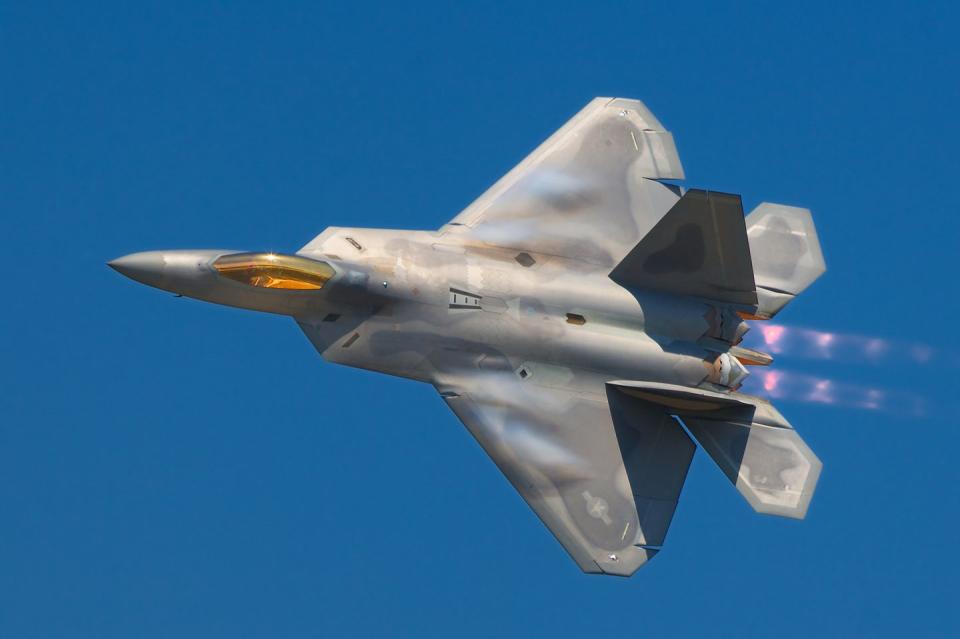The X-37B Could Become a Fighter Jet's Orbital Wingman

The U.S. Air Force wants the X-37B space plane to be able to connect to fighter jets.
It’s not clear what the Air Force has in mind.
The space plane’s high vantage point could allow it to detect adversaries or pass data between jets at long ranges.
The head of the U.S. Air Force wants to explore the idea of having the X-37B connect with fighter jets. It’s not clear what Chief of Staff General David Goldfein has in mind, but it could involve the space plane acting as a sensor platform, tracking targets below it. Alternately, it could act as a secure communications node between F-22 and F-35 fighters operating at a distance from one another.
According to Military.com, Goldfein teased that he was interested in seeing how the F-22 Raptor and F-35 Joint Strike Fighter could “connect” to the X-37B space plane. The F-22 and F-35 jets are two of the world’s first operational fifth-generation fighters, with built-in stealth, radars and advanced electro-optical sensors, and advanced communications capabilities.
The X-37B is the world’s first unmanned, reusable spacecraft. The Air Force operates two X-37Bs and the latest mission spent 780 days in orbit, a record for a reusable spacecraft. The Air Force will not discuss the spaceplane’s capabilities and missions and considering them secret.

It’s not clear what the secret spaceplane can do for the two fighter jets. The X-37B typically operates at an altitude of 200 miles, while the fighters operate at an altitude of two to seven miles. One possibility is that the space plane could deploy a radar system that can look down and ahead of friendly fighters, spotting enemy targets and relaying their location to fighters below.
There’s a problem with that idea. The X-37B generates power through a pair of solar panels that unfold after launch. The panels do not provide enough electricity to power long range radars, which typically require a power source in the kilowatt range. The X-37B would have to carry both the radar and a power supply, and its tiny cargo bay is about the size of the bed of a pickup truck. Radioisotope Thermoelectric Generators (RTGs), a plutonium-based power source for satellites, don’t produce enough power, and compact nuclear power plants are still too big to fit.
Another, more likely option is that the X-37B acts as a link between distant groups of fighters in the event the military’s existing satellite communications network is unavailable. The X-37B could relay key mission data among aircraft hundreds of miles apart, owing to its commanding position above the battlefield. However, an X-37B would only be available for a limited amount of time, as the spaceplane’s orbit takes it briefly over the aerial battlefield below and then over the horizon.
The idea of space planes connecting to fighter jets is a neat one but it’s not clear what the Air Force has in mind. The service may just be interested in the ability of the three platforms: F-35, F-22, and X-37B, to simply talk to one other—or it could be something else entirely.
Source: Military.com.
You Might Also Like

